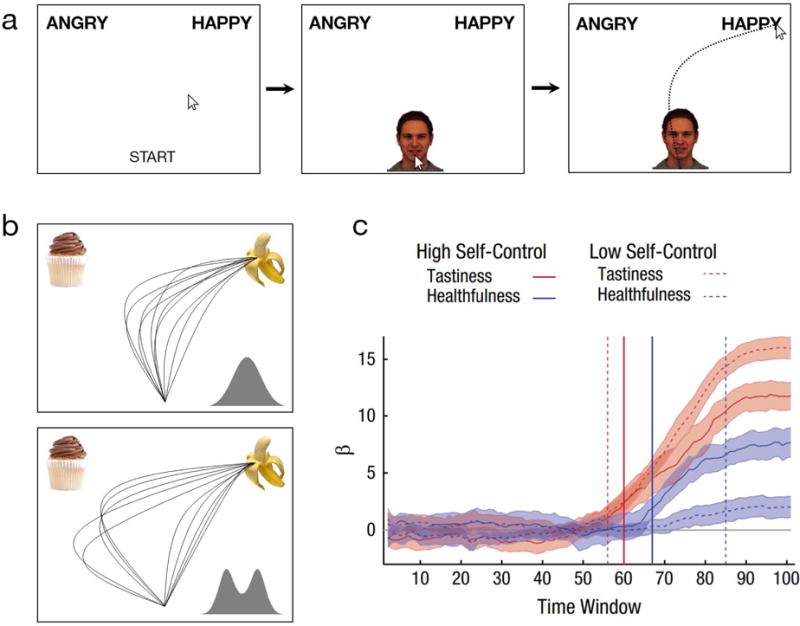Figure 1.

(a) A depiction of a standard two-choice mouse-tracking paradigm, where on each trial participants click a start button at the bottom-center, which reveals a stimulus. Participants then move the cursor and click on one of the two responses in either top corners. There are many variants, including multi-choice paradigms (e.g., four choices), sequences of stimuli (e.g., priming), or responses serving as stimuli themselves (as in b). (b) Mouse-tracking reveals decision micro-structure. In conditions of conflict, dynamic models tend to predict simultaneously active processes (e.g., impulse toward unhealthy food vs. long-term goal toward healthy food) that continuously self-organize into an explicit response. This leads to parallel attraction effects with a unimodal distribution. Dual-systems models tend to predict a System 1 process occurs automatically (e.g., automatic impulse) on certain trials, which is then intervened on by a System 2 process (e.g., controlled goal). This leads to two subpopulations of trials (extreme mid-flight correction trials and no-attraction trials) creating a bimodal distribution. (c) Example of mouse-tracking used as a time-course methodology from Sullivan et al. (2015). The strength of the relationship (regression coefficients) between trajectories’ angle-of-movement and the relative tastiness and healthfulness of one food option over another is plotted for each time window, separately for participants with low and high self-control ability. Vertical lines indicate onset of significant effects. Healthfulness was processed as early as tastiness for high self-control participants; for low self-control participants, healthfulness was processed considerably later.
